To check AC refrigerant levels, turn off the system, locate the service valve, attach a pressure gauge, and compare readings to manufacturer specifications. If low, consult a professional for refrigerant recharge.
Maintaining optimal AC performance is crucial for comfort in every season. One often overlooked aspect is checking the refrigerant levels. In this blog post, we’ll delve into the importance of proper refrigerant levels, how to identify potential issues, and the simple steps you can take to ensure your AC system is running efficiently. Don’t let a refrigerant imbalance compromise your cooling experience—stay tuned for expert insights and practical tips to keep your AC at its best!
Importance of Checking AC Refrigerant Levels
As a homeowner, it is crucial to understand the importance of checking the refrigerant levels in your AC unit. Refrigerant is a vital component that absorbs heat from the air inside your home and releases it outside, providing cool air. If the refrigerant levels are low, it can cause several problems, including a decrease in cooling capacity, increased electricity bills, and even system failure.
Signs of Low AC Refrigerant Levels
It’s essential to keep an eye out for signs that indicate low AC refrigerant levels. Some of the most common indications include:
- Warm air blowing from the vents
- Reduced cooling capacity
- Hissing or bubbling noises near the AC unit
- Frozen evaporator coils
If you notice any of these symptoms, it’s important to check the refrigerant levels and seek professional assistance if necessary.
Regularly monitoring the refrigerant levels can also help improve the efficiency and performance of your AC unit, which can help save money on energy bills and prolong the lifespan of the system. By maintaining the recommended refrigerant levels, you can ensure your home stays comfortable even during the hottest summer months.
DIY AC Refrigerant Level Check
Performing a DIY AC refrigerant level check is a straightforward process that can be done at home, but it’s essential to follow the correct steps to ensure accuracy. Here’s how to go about it:
- Gather the items you’ll need: To perform a refrigerant level check, you’ll need an AC refrigerant gauge, a thermometer, and safety gloves. You can purchase an AC refrigerant gauge at an auto parts store or online. Ensure that the gauge is compatible with your AC unit.
- Turn off the AC unit: Before starting the check, turn off the AC unit and allow it to rest for about an hour. This step is necessary to allow the refrigerant pressure within the system to stabilize.
- Locate the refrigerant service valve: The refrigerant service valve is typically located on the copper refrigerant line near the AC unit’s compressor. Once you locate it, remove the valve cap and attach the AC refrigerant gauge to the valve.
- Take a reading: With the gauge’s temperature probe, measure the temperature of the refrigerant line and record it. Then, compare the temperature with the temperature of the surrounding air. Ensure that the thermometer is not in direct sunlight, and record the temperature readings accurately.
- Check the gauge: After recording the temperatures, check the gauge readings. The gauge will indicate the refrigerant’s pressure level, measured in pounds per square inch (PSI). The optimal range for most AC systems is between 65 and 75 PSI. If the pressure is too high or too low, adjust it accordingly.
- Disconnect the gauge: After recording the readings, disconnect the AC refrigerant gauge, and replace the valve cap. Ensure that you do not over-tighten the cap.
It’s important to note that while checking the refrigerant level is a crucial maintenance practice, it’s not the only maintenance required to keep your AC unit working at optimal levels. Regular cleaning, filter replacements, and tune-ups are also essential for optimal performance.
Professional AC Refrigerant Level Service

While DIY checks are an excellent starting point, it’s essential to have a professional AC refrigerant level service performed regularly. This service involves a comprehensive inspection of the unit’s refrigerant levels and other related components to identify and address any potential issues.
During the AC refrigerant level inspection, the technician will use advanced tools and equipment to measure the refrigerant levels accurately. They may also perform additional tests to determine if there are any leaks or other problems that could affect the unit’s performance.
If any issues are found during the inspection, the technician will perform the necessary AC refrigerant level troubleshooting to identify the root cause of the problem. This may involve repairing or replacing damaged components, refill or replace the refrigerant, or adjusting the refrigerant levels to the optimal range.
Regular professional AC refrigerant level service not only helps prevent potential problems but also improves the unit’s overall efficiency and performance. It can also prolong the lifespan of your AC system, saving you money in the long run and ensuring consistent cooling throughout the summer.
By seeking the assistance of a qualified AC technician for your refrigerant level service, you can rest assured that your cooling system is always functioning optimally. So, make sure to schedule a professional service at least once a year to keep your AC unit in top shape.
AC Refrigerant Level Testing

Testing the AC refrigerant levels is an important part of maintaining your AC unit’s efficiency and performance. There are several methods you can use to test the refrigerant levels, including:
- Pressure Testing: This method involves using an AC refrigerant gauge to measure the pressure of the refrigerant in the system. The gauge readings can then be compared to the manufacturer’s recommended pressure levels to determine if the refrigerant level is too low or high.
- Refrigerant Scale: A refrigerant scale is used to measure the amount of refrigerant in the system. This method is more accurate than pressure testing since it provides an exact measurement of the refrigerant level.
It is important to note that testing the AC refrigerant levels should only be done by a trained professional, as it requires specialized equipment and knowledge. Attempting to test the levels on your own could result in damage to your AC unit or even injury.
If you suspect that your AC unit is low on refrigerant, it is crucial to contact a professional immediately. Continuing to operate your AC system with low refrigerant levels can damage the compressor and cause other serious issues.
“Regularly testing the AC refrigerant levels is the key to ensuring that your AC unit works efficiently throughout the summer months.”
AC Refrigerant Level Testing: A Professional’s Perspective
I spoke with John, a licensed HVAC technician with over ten years of experience, about the importance of testing AC refrigerant levels. According to John, “testing the refrigerant levels is a critical part of maintaining the efficiency of your AC system. Low refrigerant levels can cause the system to work harder, which can result in higher energy bills and premature system failure.”
John also emphasized the importance of regular maintenance and inspections, stating that “having a professional inspect and test your AC system annually is the best way to catch and prevent any issues before they become major problems.
Remember, regularly testing and maintaining the AC refrigerant levels is essential for keeping your AC unit working optimally. Don’t hesitate to contact a professional if you suspect any issues with your refrigerant levels.
Maintaining Optimal AC Refrigerant Levels
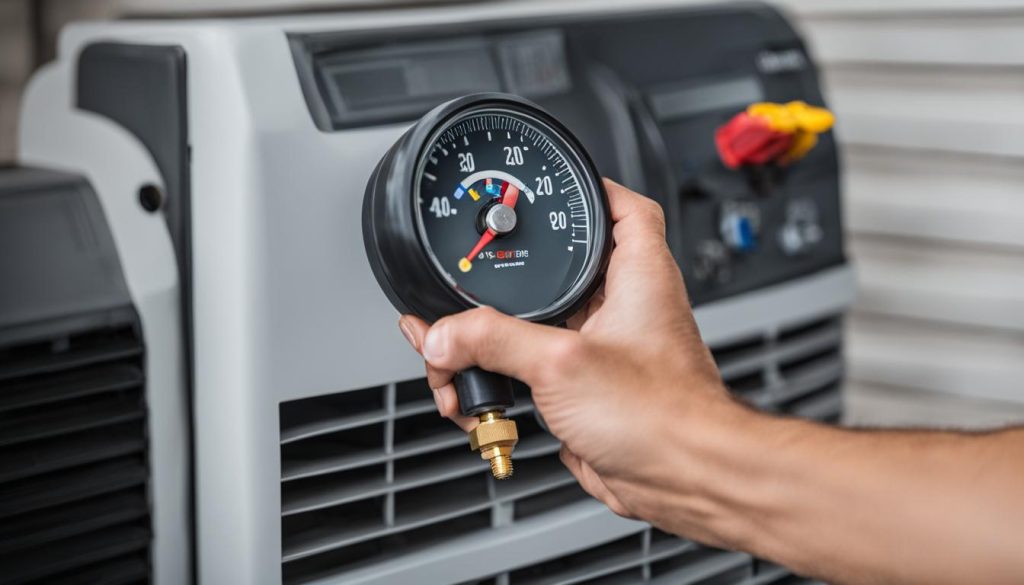
After checking the AC refrigerant levels, it’s important to maintain them within the recommended range to keep your cooling system functioning efficiently. To do this, you need to have a clear understanding of how to read the ac refrigerant gauge and adjust the levels if necessary.
The AC refrigerant gauge provides a measurement of the refrigerant pressure in the system. The gauge readings can vary depending on the system’s age, type of refrigerant used, and the outdoor temperature. As a general rule of thumb, the refrigerant pressure should be within the manufacturer’s recommended range.
If the AC refrigerant gauge reading indicates that the refrigerant levels are too low, you need to add refrigerant. However, if the levels are too high, you must remove some refrigerant. Do not overcharge the system by adding excessive refrigerant, as this can cause a range of problems such as compressor failure, higher energy bills, and reduced cooling efficiency.
If you’re not comfortable adjusting the refrigerant levels yourself or are unsure of your capabilities, seek professional assistance. A professional HVAC technician can provide a thorough refrigerant level check and adjust the levels accordingly.
Common AC Refrigerant Level Problems
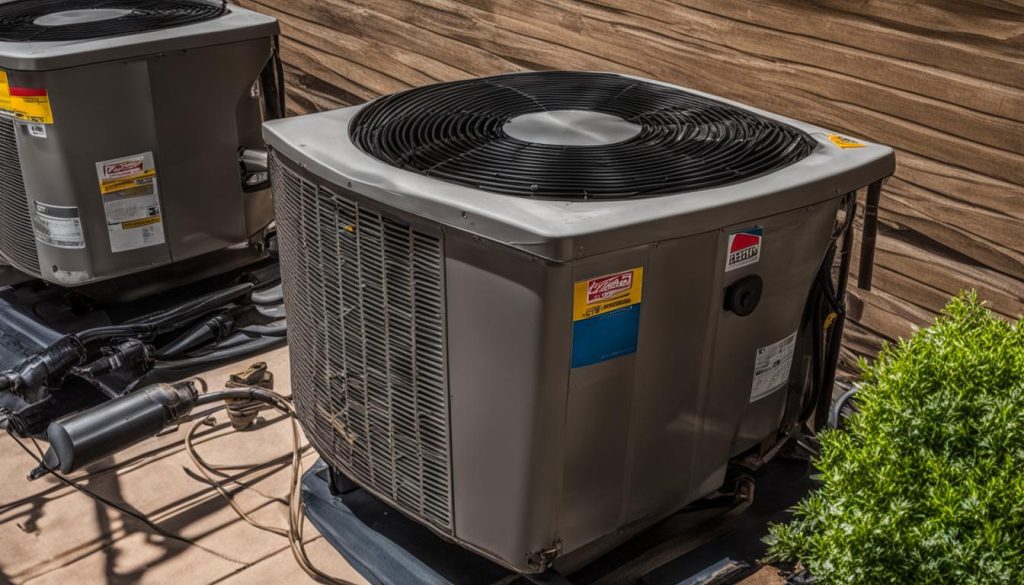
It’s important to keep an eye out for potential AC refrigerant level problems to prevent further damage to your cooling system. Here are some common issues you may encounter:
| Problem | Signs | Solution |
|---|---|---|
| Refrigerant leaks | Low AC refrigerant levels, warm air blowing from vents, hissing noises from the indoor or outdoor unit | Identify the leaks and repair them. Add refrigerant to the system as necessary. |
| Improper charging | Wrong refrigerant levels, inefficient cooling | Have a professional inspect and charge the refrigerant to the correct levels. |
| Clogging in the refrigerant lines | Inefficient cooling, frozen evaporator coils | Clean or replace the refrigerant lines. |
If you notice any of these signs, it’s important to address the issue promptly to prevent further damage to your AC system. Seeking professional help is recommended, as these problems require proper skills and equipment to fix.
“Not addressing refrigerant level problems can lead to costly repairs and replacements, so it’s best to tackle them as soon as possible.”
Conclusion
Now you know how to check your AC refrigerant levels and maintain them within the recommended range. Regularly monitoring and adjusting the refrigerant levels will help your AC unit function optimally and provide consistent cooling throughout the summer months.
If you notice any signs of low refrigerant levels, such as reduced cooling or an increase in energy bills, it’s vital to take action immediately. You can perform a DIY check using an AC refrigerant gauge, but seeking professional assistance is always recommended for complex issues.
Remember, maintaining optimal AC refrigerant levels is essential for the efficient operation of your cooling system. By following the easy guide provided in this article, you can be sure that your AC unit is working optimally and keeping your home cool and comfortable.
Frequently Asked Questions About Maintaining Optimal AC Refrigerant Levels
- How often should I check the AC refrigerant levels?
- You should check the AC refrigerant levels at least once a year, preferably before the start of the summer season.
- What should I do if the AC refrigerant gauge reading is outside the recommended range?
- If the AC refrigerant gauge reading is outside the recommended range, you should adjust the refrigerant levels. If you’re not comfortable adjusting the refrigerant levels yourself, seek professional assistance.
- What are the consequences of low refrigerant levels?
- Low refrigerant levels can cause reduced cooling efficiency, higher energy bills, and even compressor failure.

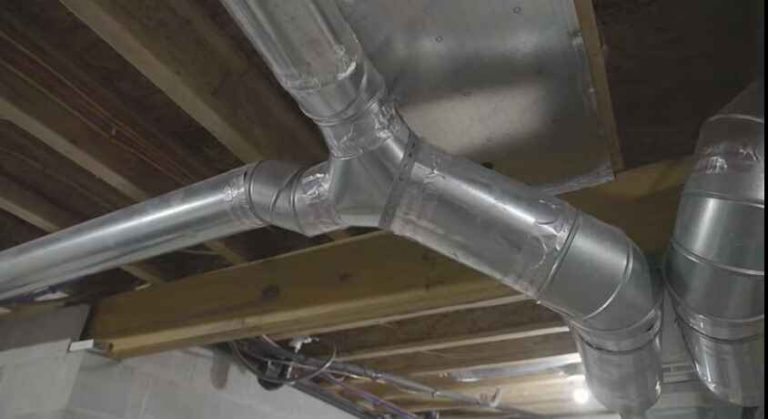
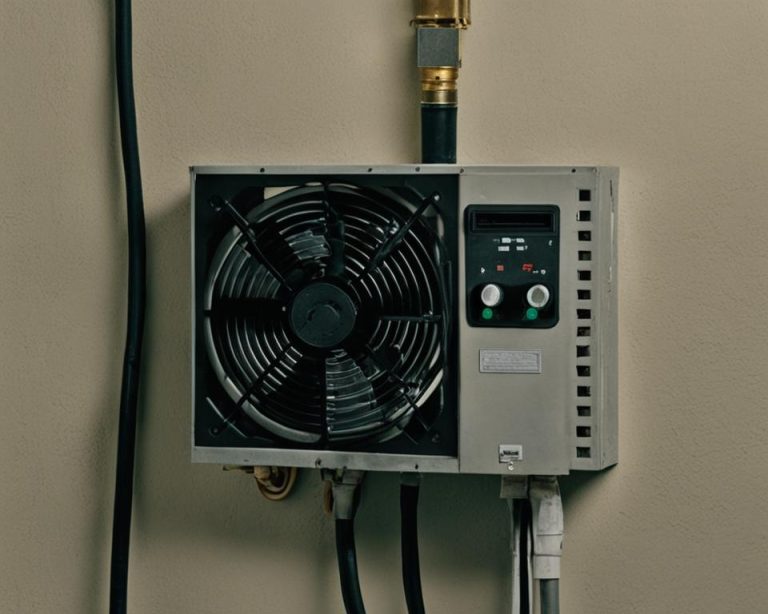
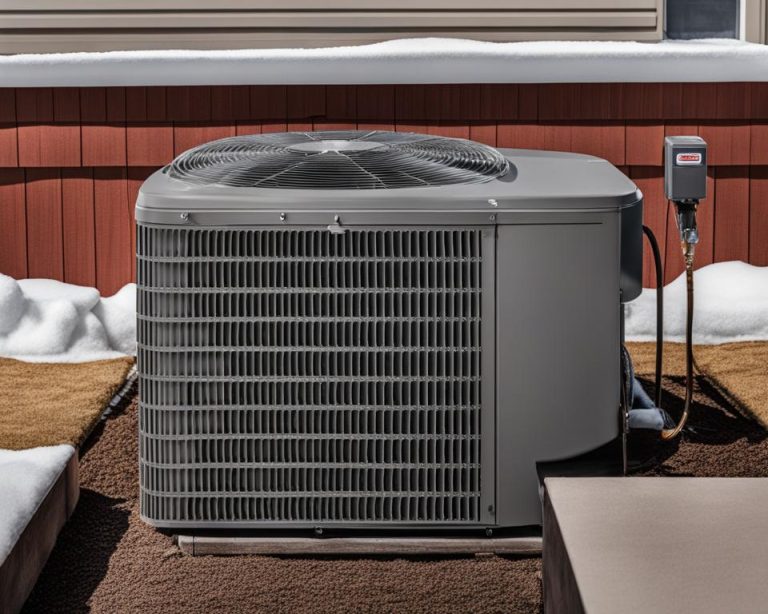

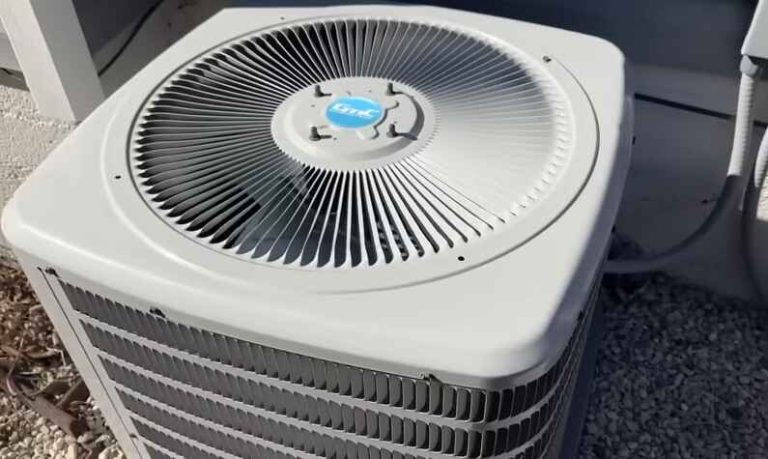
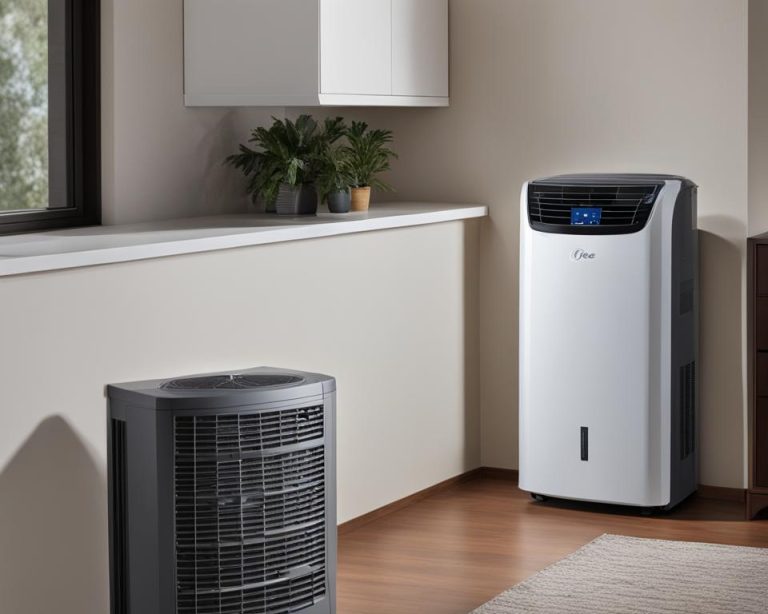
41 Comments